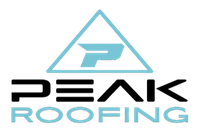When dealing with home improvement projects, particularly significant ones like roofing, financial arrangements can be complex. A common practice in the construction industry is for contractors to request a “draw,” or partial payment, before the completion of the entire project. Understanding what a draw is and why a roof contractor might request one can help homeowners make informed decisions.
Understanding the Concept of a Draw
In the context of construction projects, a “draw” refers to a partial payment made to the roof contractor before the entire project is completed. This payment is typically based on the percentage of work completed or specific milestones achieved. Draws are a way for contractors to maintain cash flow, purchase materials, and pay workers as the project progresses. This practice is common across the construction industry, including among West Texas roofers, where large-scale projects often require significant upfront investment.
For homeowners, agreeing to a draw schedule means understanding the financial plan for the project. It is essential to ensure that the terms of the draw are clearly outlined in the contract, specifying the amount, timing, and conditions under which each payment is to be made. This clarity helps prevent misunderstandings and ensures that both parties are aligned on expectations throughout the project’s duration.
Reasons for Requesting a Draw
Roofing projects often involve substantial costs for materials and labor, which is why roof contractor may request draws. By receiving payments in stages, contractors can purchase necessary materials without needing to shoulder the entire financial burden upfront. This is particularly important for small or mid-sized businesses that may not have extensive financial reserves to fund large projects entirely out of pocket.
Additionally, requesting a draw helps contractors manage their cash flow effectively. Maintaining a steady cash flow is crucial for keeping a project on schedule and ensuring that all workers and subcontractors are paid promptly. Without the security of a draw, contractors might face delays in acquiring materials or compensating their teams, which could ultimately extend the project timeline and increase costs for the homeowner.
Industry Norms and Practices
In the roofing industry, requesting a draw is considered a standard practice. Many contractors structure their payment schedules to include several draws at different stages of the project. For example, a common payment structure might involve an initial deposit, followed by additional draws when specific milestones are reached, such as the delivery of materials, the completion of the tear-off phase, and the installation of new roofing.
Homeowners should understand that while requesting a draw is normal, the specifics of the payment schedule can vary. It is crucial to discuss these details with the contractor before signing any agreements. A well-drafted contract should outline the payment terms, ensuring transparency and protecting both parties’ interests. This is especially important if the homeowner is financing the project through a loan, as the lender may have specific requirements for how funds are disbursed.
Ensuring Fairness and Transparency
For homeowners, ensuring fairness and transparency when dealing with draws is paramount. Before agreeing to a draw schedule, it is advisable to request a detailed breakdown of the project’s cost. This breakdown should include the estimated cost of materials, labor, and any other expenses. By having a clear understanding of these costs, homeowners can feel confident that the draw amounts requested by the contractor are reasonable and justified.
Moreover, communication is key to maintaining transparency. Homeowners should feel comfortable asking questions and seeking clarification on any aspect of the draw schedule or overall project. A reputable contractor will be willing to provide detailed explanations and address any concerns, fostering a relationship built on trust and collaboration.
Protecting Yourself as a Homeowner
To protect themselves when agreeing to a draw schedule, homeowners should take several precautions. First, it’s essential to verify the credibility and reputation of the roofing contractor. Checking references, reading reviews, and confirming licenses and insurance coverage can provide peace of mind that the contractor is reliable and professional.
Additionally, it’s wise to avoid paying too much upfront. While an initial deposit is standard, subsequent draws should be tied to specific milestones or percentages of work completed. This ensures that payments are made only after tangible progress has been demonstrated. In the event of disputes or delays, having a well-defined draw schedule can serve as a safeguard for the homeowner, providing leverage to negotiate resolutions.
Legal and Contractual Considerations
From a legal perspective, the terms of a draw schedule should be clearly defined in the contract. The contract should specify the amounts and conditions for each draw, as well as any penalties or remedies for non-compliance. Consulting with a legal professional before signing the contract can help ensure that the terms are fair and enforceable. Understanding these laws and ensuring compliance with the draw schedule can prevent potential legal issues down the road.
Case Study: Implementing a Draw System
To better understand how a draw system functions, consider a typical scenario involving a reputable roofing company. This company often handles projects that require significant upfront investment in materials and labor. By utilizing a draw system, they ensure that both the company and the homeowner benefit from a structured payment plan.
For the homeowner, this structured payment plan offers peace of mind. It provides a clear understanding of when payments are due and what work should be completed at each stage. By working with Peak Roofing, homeowners can feel confident that their investment is protected and that the project will progress smoothly. This balance of trust and financial clarity is essential for successful collaboration between contractors and clients in the roofing industry.
It is normal for a roofing contractor to request a draw on unfinished work. Draws help contractors manage cash flow, purchase materials, and maintain project timelines. For homeowners, understanding the concept of a draw, negotiating fair terms, and ensuring transparency are crucial steps in safeguarding their interests. By approaching the process with due diligence and clear communication, both homeowners and contractors can collaborate effectively to achieve successful roofing projects.
Peak Roofing & Exteriors
If you’re looking for an honest and experienced roofing contractor that can handle your home or business roofing needs in West Texas, look no further. Peak Roofing & Exteriors will deliver with quality and integrity. Contact us today and book your FREE inspection!

